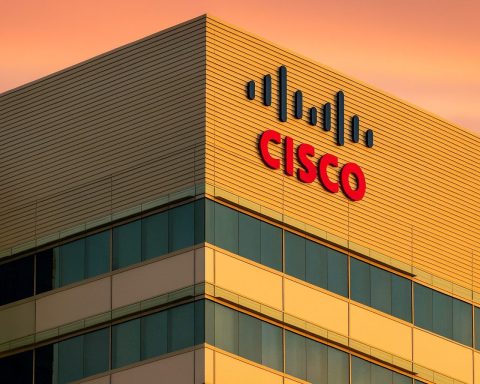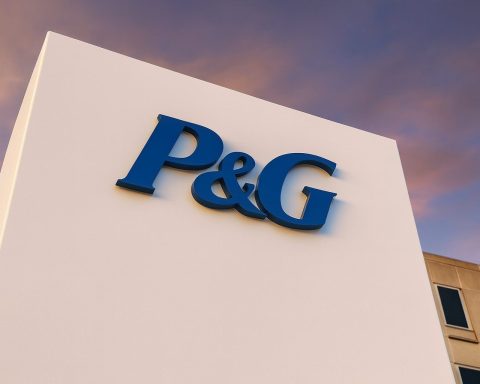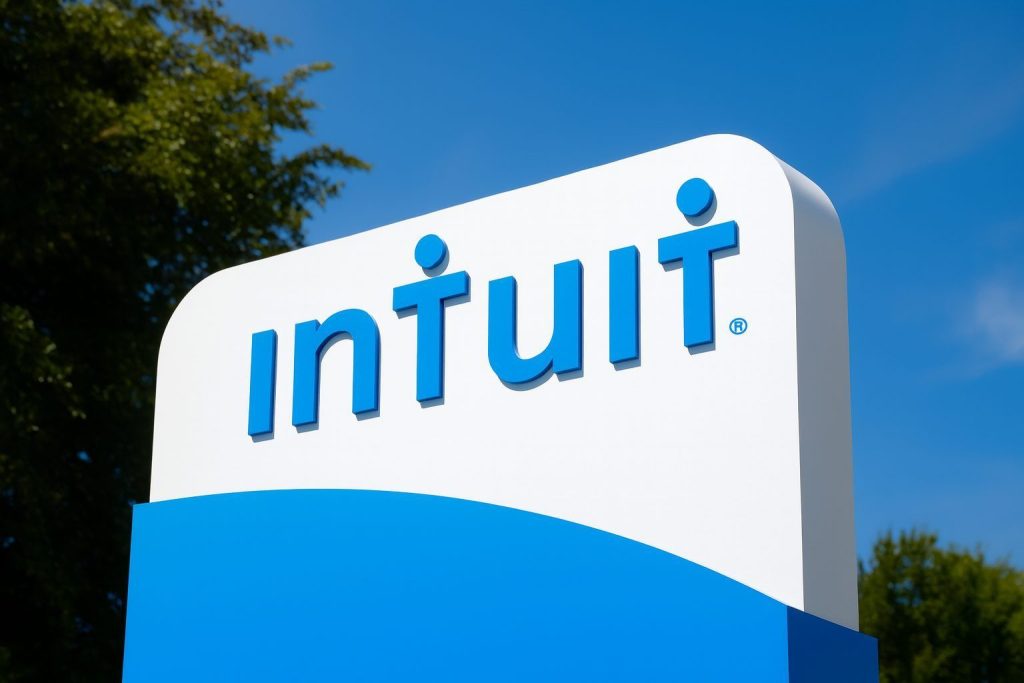Uber Technologies, Inc. (NYSE: UBER) stock is trading slightly lower today as investors weigh a busy news day: a proposed acquisition of Getir’s food delivery business in Türkiye, a landmark minimum-pay deal for Uber Eats riders in Australia, fresh Uber One membership perks, and new delivery milestones in key markets.
Uber share price today: UBER edges lower but stays near 2025 highs
As of the latest available data on November 25, 2025, Uber shares are trading around $83.7, down roughly 0.3% on the session. The stock has moved between about $83.0 and $84.8 intraday, with volume close to 25 million shares, indicating another active trading day for one of the S&P 500’s most-watched tech names.
Despite recent volatility, Uber remains one of 2025’s standout large-cap performers. As of mid-November, the stock was up about 50% year to date, reflecting investor confidence in the company’s profitability turnaround and growth in both mobility and delivery segments. [1]
Short-term momentum, however, has softened. Over roughly the last month, Uber shares have fallen around 11%, underperforming the broader market as traders digest guidance, regulatory risks and rising expectations baked into the valuation. [2]
1. Uber seeks approval to buy Getir Food in Türkiye
One of the key corporate developments informing today’s Uber stock narrative is its push to expand food delivery in Türkiye via acquisition.
According to Reuters, Uber has agreed key terms to acquire the food business of Turkish delivery company Getir from its controlling shareholder Mubadala, and has submitted the deal for review to Türkiye’s Competition Board. [3]
What we know about the proposed Getir Food deal
- Scope: Uber would acquire Getir Food, the food-delivery arm of Getir, not the entire company.
- Strategic impact: The deal would significantly expand Uber Eats’ local market share in Türkiye, where it competes with established players like Trendyol and Yemeksepeti (owned by Germany’s Delivery Hero). [4]
- Regulatory status: A formal review by Türkiye’s Competition Board is underway. A final agreement hinges on that outcome, and the sale price has not been disclosed. Reuters’ sources caution that the transaction could still fall through. [5]
- Regional strategy: Uber is already deepening its presence in Türkiye, including a $700 million deal to buy a majority stake in Trendyol GO and plans for a $200 million technology center in the country over five years. [6]
Why it matters for Uber stock
For investors, the Getir Food bid reinforces several themes:
- Local commerce scale: Uber’s strategy is to build a broad “local commerce” platform (groceries, convenience, restaurant delivery). A strong foothold in Türkiye plugs into a populous, urbanized market with growing online penetration. [7]
- Regulatory risk: Any conditions imposed by competition authorities could weigh on margins or operational flexibility, a recurring risk in Uber’s expansion playbook.
- Capital allocation: With Uber now consistently generating free cash flow, investors will watch closely how much capital is deployed into M&A versus buybacks and debt reduction.
In the short term, the news adds a growth-positive but still uncertain catalyst to the UBER story.
2. “World‑first” minimum pay deal for Uber Eats riders in Australia
In parallel, Uber is at the center of a major labour development in Australia’s gig economy — one that could have ripple effects for its delivery margins globally.
The deal: from per-drop to hourly safety net
The Transport Workers Union (TWU) has struck an agreement with Uber Eats and DoorDash that would replace pure per-delivery pay with minimum “safety net” hourly rates plus new protections for delivery riders and drivers. [8]
Key elements, pending approval by the Fair Work Commission, include:
- A minimum hourly rate of about AUD $31 for Uber Eats and DoorDash couriers, with platforms required to top up earnings if per-delivery pay falls short. [9]
- Minimum safety-net pay rates across transport types, not just restaurant orders. [10]
- Dispute resolution mechanisms, representation rights and a formal voice for platform workers. [11]
- Accident insurance funded by the platforms, improving coverage when riders are injured on the job. [12]
Union and media reports call the agreement a “historic” or “world-first” moment for gig-economy conditions, with the TWU arguing it will materially lift pay for workers who have often earned below Australia’s minimum wage under a per-drop model. [13]
Cost implications for Uber
From a stock perspective, investors will focus on who ultimately pays for higher labour standards:
- Uber Eats currently charges roughly 30% commission on restaurant orders in Australia, leaving scope to shift some costs to merchants and consumers if needed. [14]
- Labour experts quoted by ABC News expect the cost burden to be shared between platforms, restaurants and customers, rather than falling solely on Uber and DoorDash. [15]
In the short term, the deal could compress delivery margins in Australia, particularly if competitive pressure limits Uber’s ability to raise prices. Longer term, the agreement might:
- Reduce legal and regulatory overhang by putting standards on a more predictable footing.
- Improve driver retention and service reliability, which can lift customer satisfaction and order frequency.
For investors, today’s news highlights the trade‑off between regulatory risk and platform durability — a core theme in valuing UBER.
3. Uber One holiday push: deepening engagement with high‑value users
On the consumer side, Uber is leaning into the holiday season to drive usage and loyalty among Uber One members.
A new company blog post, published about 12 hours ago, details several upgrades to the membership program: [16]
- Family Sharing: Members in the US can now share Uber One benefits with one other adult and multiple teens at no extra cost, extending $0 Delivery Fee and rewards across households.
- Complimentary ride upgrades: During December, Uber plans to upgrade more than one million rides for members from UberX to higher tiers like Uber Comfort or Uber Black when available, at no additional charge. [17]
- Holiday discounts: Uber One members get extra promotions on airport rides and grocery orders, plus early access to Black Friday deals such as $25 off eligible Uber Eats retail orders, with some promos expiring this week (including a grocery “Fresh Tuesday” offer ending on November 25, 2025). [18]
For Uber stock, this highlights an increasingly important part of the thesis:
- Membership = frequency: Subscription-like programs tend to increase ride and delivery frequency, stabilizing revenue and supporting higher lifetime value per customer.
- Cross‑product lock‑in: A user who relies on Uber for rides, groceries, retail, and restaurant delivery becomes harder for rivals to dislodge.
While not a classic “stock‑moving” headline, the Uber One push reinforces the recurring‑revenue, platform‑ecosystem narrative that many analysts cite in their bullish cases for UBER. [19]
4. Uber Eats passes 1 billion deliveries in Australia
Another data point relevant to Uber’s delivery story today comes from Retail World Magazine in Australia. According to Uber, the company has now completed 1 billion Uber Eats deliveries in Australia, underscoring the scale of its food-delivery footprint there. [20]
Highlights from Uber’s 2025 “Cravings Report” include: [21]
- Uber Eats has grown from around 300 restaurant partners at launch to tens of thousands of merchants, handling millions of orders each week.
- Consumer trends point to strong demand for fast food, zero‑sugar soft drinks, matcha-based beverages, acai bowls, and coffee, along with heavy ordering of “comfort foods” like hot chips and burgers.
This milestone, combined with the new minimum-pay framework, paints a picture of a mature but still growing delivery market in Australia — important for investors evaluating how much incremental margin Uber can squeeze from a large, heavily used platform.
5. Local labour flashpoint in India: vandalism at a Bengaluru Uber office
Not all of today’s headlines are macro or strategic. In Bengaluru, India, eight drivers were arrested after allegedly vandalising an Uber driver support center in the Bommanahalli area. [22]
According to local reports:
- The protestors accused Uber of unfair ride allocation, alleged preference for certain fleets and blacklisting of local (Kannadiga) drivers. [23]
- Police say the group damaged the office and intimidated staff before being detained.
- Uber issued a statement denying any differential treatment between fleet and independent drivers, asserting that its policies are designed for fairness and that it operates a “zero‑commission” model in which drivers keep 100% of fares after a subscription fee. [24]
While this incident is unlikely to materially affect Uber’s global financials, it underscores:
- The ongoing sensitivity around driver treatment and local labour politics in key emerging markets.
- The reputational and regulatory risks that can arise when drivers feel algorithms or policies are opaque or unfair.
For stockholders, it’s a reminder that execution at street level still matters, especially in countries where Uber is seeking to grow both ride-hailing and delivery.
6. The broader backdrop: strong Q3 results, autonomy bets and upbeat Wall Street forecasts
Today’s news sits on top of an already eventful November for Uber.
Q3 2025: strong growth and record profitability
On November 4, Uber reported third‑quarter 2025 results that showed: [25]
- Trips up 22% year over year to 3.5 billion.
- Gross Bookings up 21% to about $49.7 billion.
- Revenue up 20% to $13.5 billion.
- Income from operations of $1.1 billion, with net income of $6.6 billion, boosted by a $4.9 billion tax valuation release and gains on equity investments.
- Adjusted EBITDA up 33% to $2.3 billion, with margin improving to 4.5% of Gross Bookings.
- Free cash flow of $2.2 billion and $9.1 billion in unrestricted cash and short-term investments at quarter-end.
Uber’s outlook for Q4 2025 calls for: [26]
- Gross Bookings of $52.25–$53.75 billion (17–21% YoY growth).
- Adjusted EBITDA of $2.41–$2.51 billion (31–36% YoY growth).
These numbers underpin the view that Uber has transitioned from a growth-at-all-costs story to one of scalable profitability and cash generation.
Autonomy and robotics: from robotaxis to delivery robots
Recent weeks have also seen progress on Uber’s autonomy strategy:
- NVIDIA partnership: Uber plans to integrate human drivers and autonomous vehicles into a unified global ride-hailing network, leveraging NVIDIA’s DRIVE AGX Hyperion 10 platform to enable Level‑4-ready robotaxis. [27]
- Starship Technologies partnership: Uber has announced a deal with Starship Technologies to roll out autonomous sidewalk delivery robots for Uber Eats in the UK starting in December (initially in Leeds and Sheffield), with expansion to more European markets and the US in later years. [28]
- Serve Robotics tie-in: Uber has agreed to deploy around 2,000 Serve Robotics delivery robots across major US markets like Los Angeles, Miami, Atlanta and Chicago by the end of 2025, further automating last‑mile delivery in dense urban areas. [29]
Together, these initiatives support the long-range bull case that automation could raise Uber’s margins over time by reducing reliance on human drivers and couriers — even as today’s Australian minimum-wage deal shows that human labour will remain central for years.
Analyst sentiment and valuation
Against this backdrop, equity analysts remain broadly positive on UBER:
- A compilation of 31 Wall Street analysts shows a “Strong Buy” consensus rating, with an average 12‑month price target of about $108.6, implying roughly 30% upside versus today’s ~$84 share price. The target range stretches from $78 on the low end to $150 at the high end. [30]
- Recent research notes highlight Uber’s steady revenue growth, earnings momentum and upward estimate revisions, even as near‑term volatility shakes out more speculative holders. [31]
Still, some commentators caution that expectations are high after such a strong year-to-date run, leaving the stock sensitive to any disappointments in growth, regulatory outcomes, or profitability.
7. What today’s news means for Uber investors
For anyone watching UBER stock on November 25, 2025, today’s headlines collectively tell a nuanced story:
Key positives
- Strategic expansion: The proposed Getir Food acquisition strengthens Uber’s international delivery footprint, particularly in a market where it is also investing heavily via Trendyol GO and a new tech hub. [32]
- Network depth & engagement: Uber One upgrades and seasonal promos support higher frequency and cross‑product usage among high‑value customers. [33]
- Scale milestones: One billion Uber Eats deliveries in Australia reinforce Uber’s position as a dominant local-commerce platform in that market. [34]
- Profitability backdrop: Q3 showed robust growth paired with record profitability and strong cash flow, giving Uber more financial flexibility for M&A and buybacks. [35]
Key watchpoints
- Labour and regulation: The Australian minimum-pay deal and the Bengaluru protest both highlight ongoing tensions around gig work and driver treatment. Higher labour standards might raise costs in the short term, even if they reduce regulatory risk over time. [36]
- Deal execution risk: The Getir Food transaction is still subject to regulatory approval, and the purchase price remains undisclosed; it could be cancelled or altered. [37]
- Valuation sensitivity: After a strong 2025 rally, Uber’s share price embeds substantial optimism about growth, autonomy and margin expansion — making it vulnerable to macro shocks or company‑specific missteps. [38]
Bottom line
Uber stock is having a relatively quiet trading day in price terms, but November 25, 2025 is anything but quiet for the underlying business.
Between a proposed Getir Food acquisition, a world‑first minimum-pay framework for Uber Eats riders in Australia, aggressive Uber One holiday promotions, and new delivery milestones, investors are being asked to balance regulatory and cost headwinds against a still‑powerful story of scale, profitability and platform expansion.
As always, this article is for informational purposes only and does not constitute financial or investment advice. Anyone considering UBER — or any stock — should assess their own risk tolerance, time horizon and diversification needs, and consider consulting a qualified financial adviser.
References
1. www.nasdaq.com, 2. www.zacks.com, 3. www.reuters.com, 4. www.reuters.com, 5. www.reuters.com, 6. www.dailysabah.com, 7. investor.uber.com, 8. www.abc.net.au, 9. www.abc.net.au, 10. www.hcamag.com, 11. www.hcamag.com, 12. www.abc.net.au, 13. www.abc.net.au, 14. www.hcamag.com, 15. www.abc.net.au, 16. www.uber.com, 17. www.uber.com, 18. www.uber.com, 19. stockanalysis.com, 20. retailworldmagazine.com.au, 21. retailworldmagazine.com.au, 22. timesofindia.indiatimes.com, 23. timesofindia.indiatimes.com, 24. timesofindia.indiatimes.com, 25. investor.uber.com, 26. investor.uber.com, 27. nvidianews.nvidia.com, 28. www.reuters.com, 29. finviz.com, 30. stockanalysis.com, 31. finance.yahoo.com, 32. www.reuters.com, 33. www.uber.com, 34. retailworldmagazine.com.au, 35. investor.uber.com, 36. www.abc.net.au, 37. www.reuters.com, 38. www.zacks.com







